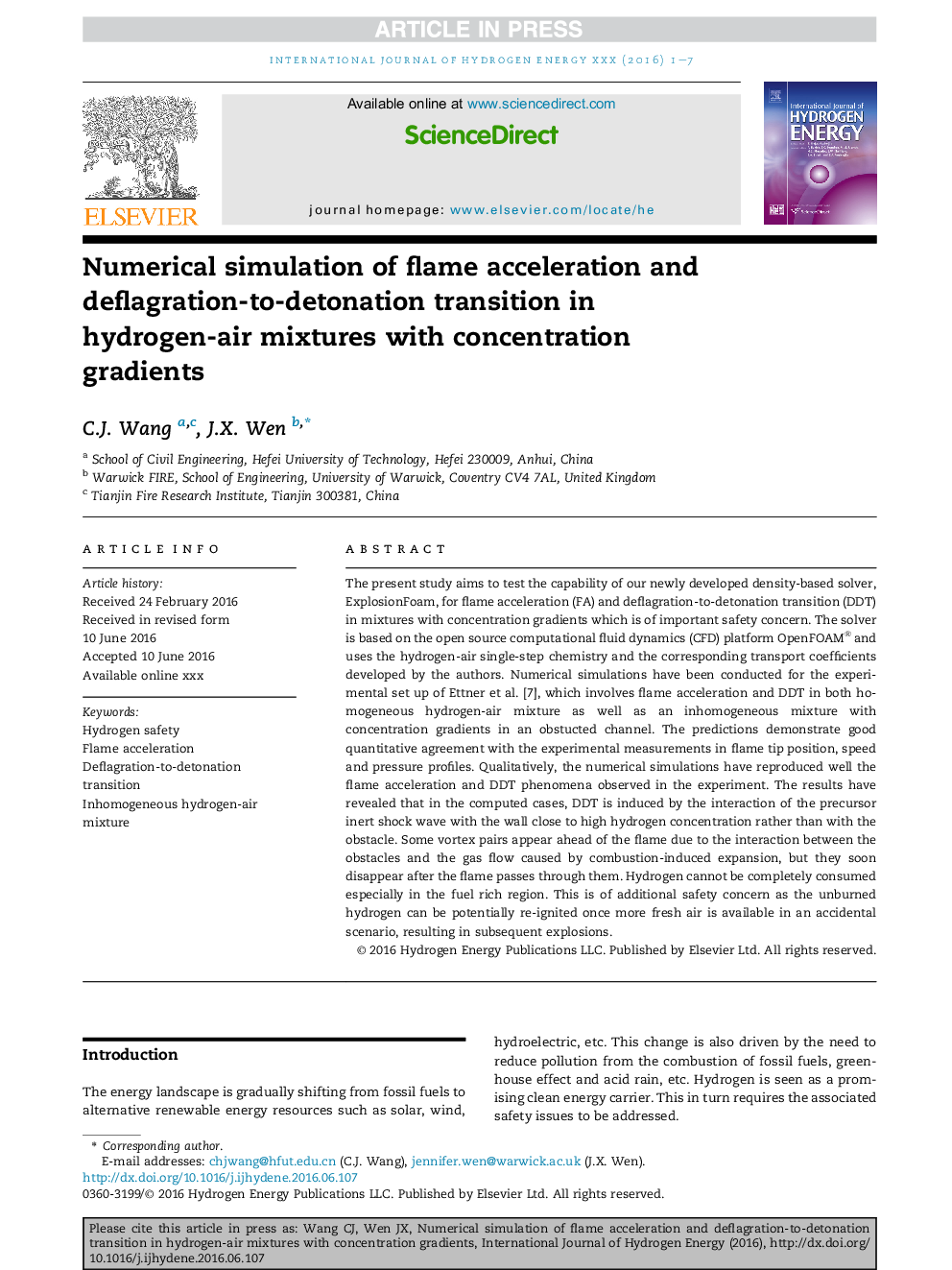| کد مقاله | کد نشریه | سال انتشار | مقاله انگلیسی | نسخه تمام متن |
|---|---|---|---|---|
| 5145381 | 1497366 | 2017 | 7 صفحه PDF | دانلود رایگان |
عنوان انگلیسی مقاله ISI
Numerical simulation of flame acceleration and deflagration-to-detonation transition in hydrogen-air mixtures with concentration gradients
دانلود مقاله + سفارش ترجمه
دانلود مقاله ISI انگلیسی
رایگان برای ایرانیان
کلمات کلیدی
موضوعات مرتبط
مهندسی و علوم پایه
شیمی
الکتروشیمی
پیش نمایش صفحه اول مقاله

چکیده انگلیسی
The present study aims to test the capability of our newly developed density-based solver, ExplosionFoam, for flame acceleration (FA) and deflagration-to-detonation transition (DDT) in mixtures with concentration gradients which is of important safety concern. The solver is based on the open source computational fluid dynamics (CFD) platform OpenFOAM® and uses the hydrogen-air single-step chemistry and the corresponding transport coefficients developed by the authors. Numerical simulations have been conducted for the experimental set up of Ettner et al. [7], which involves flame acceleration and DDT in both homogeneous hydrogen-air mixture as well as an inhomogeneous mixture with concentration gradients in an obstucted channel. The predictions demonstrate good quantitative agreement with the experimental measurements in flame tip position, speed and pressure profiles. Qualitatively, the numerical simulations have reproduced well the flame acceleration and DDT phenomena observed in the experiment. The results have revealed that in the computed cases, DDT is induced by the interaction of the precursor inert shock wave with the wall close to high hydrogen concentration rather than with the obstacle. Some vortex pairs appear ahead of the flame due to the interaction between the obstacles and the gas flow caused by combustion-induced expansion, but they soon disappear after the flame passes through them. Hydrogen cannot be completely consumed especially in the fuel rich region. This is of additional safety concern as the unburned hydrogen can be potentially re-ignited once more fresh air is available in an accidental scenario, resulting in subsequent explosions.
ناشر
Database: Elsevier - ScienceDirect (ساینس دایرکت)
Journal: International Journal of Hydrogen Energy - Volume 42, Issue 11, 16 March 2017, Pages 7657-7663
Journal: International Journal of Hydrogen Energy - Volume 42, Issue 11, 16 March 2017, Pages 7657-7663
نویسندگان
C.J. Wang, J.X. Wen,